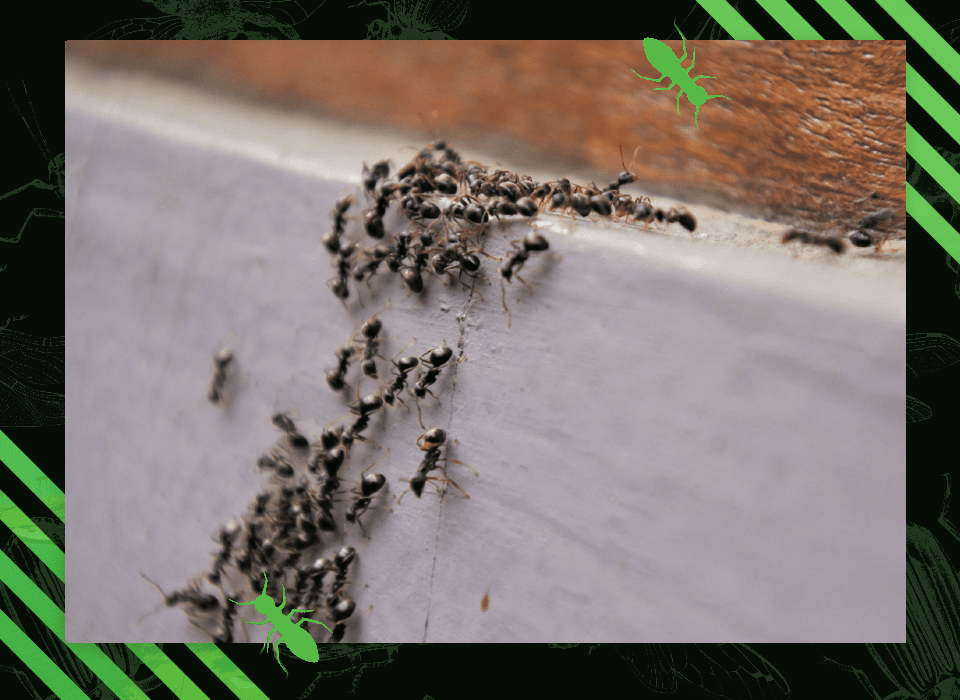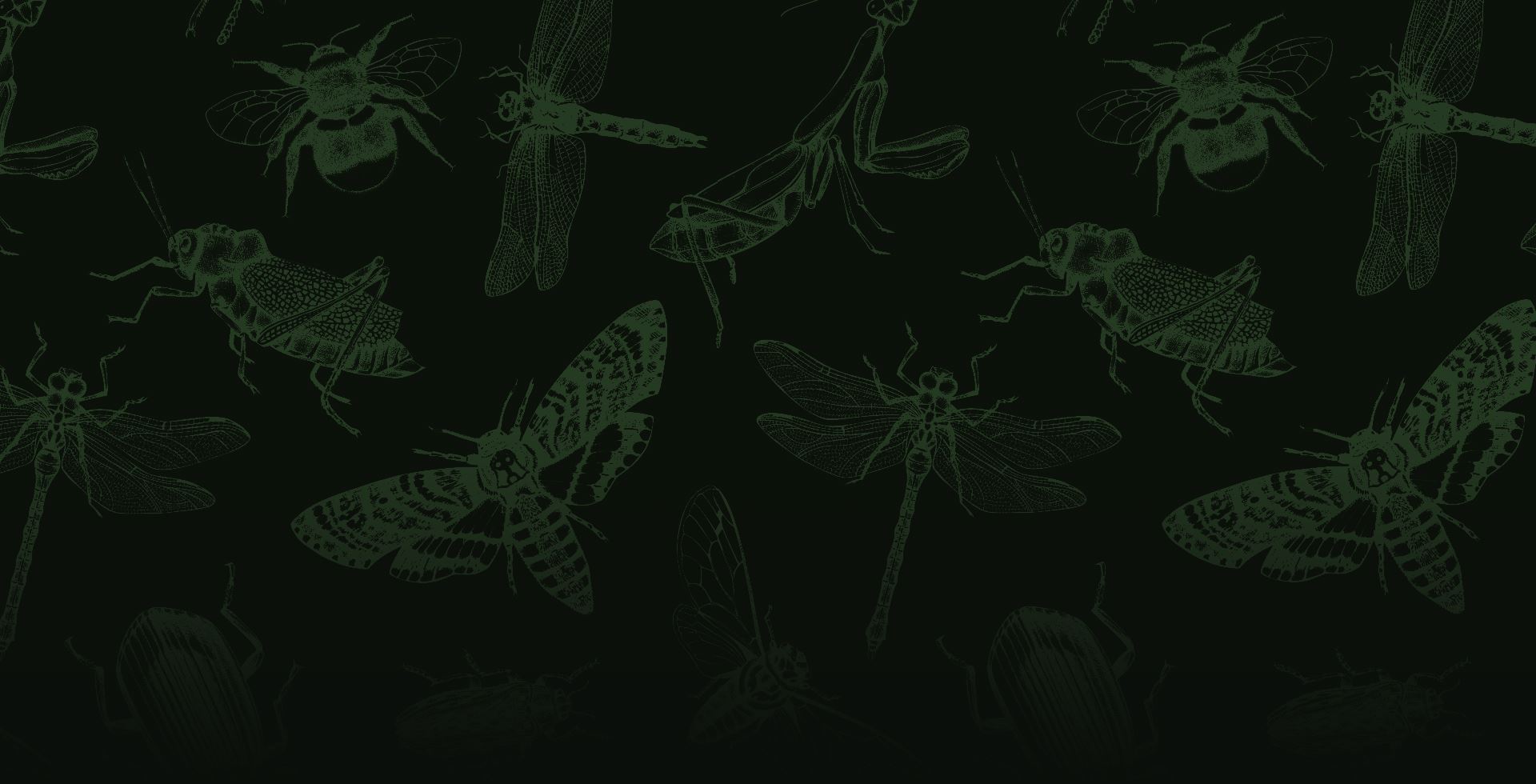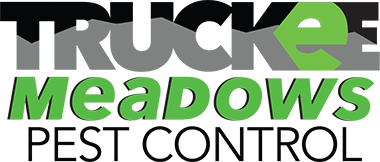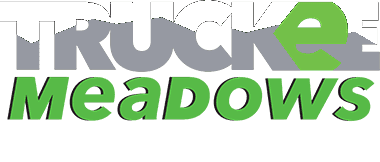Ant Control Services
in Reno
Ant Extermination Solutions for Nevada Homeowners
Ants are closely related to bees and wasps. They are social insects that live in colonies that have various specialized groups. Most ants in a colony are workers and do most of the foraging for food, raise the young, and defend the colony. Ants have three body segments head, thorax, and abdomen with a pinched waist. Most ants are identified by the type of antennae (elbowed or clubbed) and by the number of nodes in between the abdomen and thorax. Reproductive ants are winged and are often mistaken as termites. To be able to tell the difference, termites have two body segments and the same size pair of wings vs. ants having three body segments and forewings larger than their hind wings.
Common Ant Species in Your Home and How to Identify Them
- Carpenter Ants: Identifying and Understanding Their Habits – The carpenter ant is polymorphic meaning that there can be more than one size ant in the colony ranging from 1/8” to 1/2” with the queen up to 5/8”. Identified by having one node in between the thorax and abdomen and elbowed 12 segmented antennae without a club. They do not sting but their powerful jaws can produce a painful pinch. Carpenter ants attack wood that has high moisture content. They do not consume wood but cut galleries that leave behind sawdust-like shavings.
- Harvester Ants: The Outdoor Foragers Rarely Seen Indoors – Fairly large 1/4 to ½ an inch and orange to reddish in color. Antennae are 12 segments without a club. They have two nodes between the abdomen and thorax. Found in fields their mounds are stripped of vegetation. The mound consists of small pebbles that have been excavated and usually have 3 entrances. Harvester ants are herbivorous and feed on seeds from the surrounding vegetation and are rarely found in homes. They will bite and have a mildly painful sting. There are two types of Harvester ants in Nevada the California Harvester and the Western Harvester.
- Pavement Ants: The Common Indoor Intruders – This ant gets its name from commonly having its nest under cracks in pavement. Light brown to black with paler legs 1/16” to 1/8”. The antenna has 12 segments with a 3-segmented club. 2 nodes between the abdomen and thorax. Colonies are fairly large containing 3-4000 ants and several queens. Outside they live under rocks or in slab-constructed homes. Foraging becomes a problem in homes during the summer months.
What are the Signs You Have an Ant Infestation?
Detecting an ant infestation early is crucial to prevent it from escalating. Here are some signs that indicate you might have an ant infestation:
- Visible Ants Inside Your Home: A Sure Sign of Trouble: Seeing ants indoors, especially in large numbers, is a clear sign of an infestation. They may be seen trailing along walls, floors, or countertops, particularly in areas where food is present.
- Ant Trails: The Pathway to the Problem: Ants typically follow scent trails to and from their nest to food sources. You may notice well-defined trails of ants moving back and forth between their nest and a food source.
- Ant Nests: Uncovering the Source of the Infestation: Depending on the species, ant nests can be found both indoors and outdoors. Look for small piles of soil or debris near your home’s foundation, in gardens, or under paving stones, as these may indicate ant nests.
- Frass: Telltale Signs of Carpenter Ant Activity: Some ant species create nests inside wooden structures. Frass, which is a mix of wood particles, soil, and insect waste, may be visible near entry points or around the nest.
- Rustling Noises: Listening for Carpenter Ants: Certain ant species, such as carpenter ants, may make rustling or crinkling sounds inside wooden structures as they excavate tunnels and chambers.
- Visible Wood Damage: A Red Flag for Carpenter Ants: Carpenter ants can cause structural damage to wooden elements of buildings. Look for hollow-sounding or damaged wood, especially in areas prone to moisture like basements and attics.
- Piles of Frass or Debris: Evidence of an Active Ant Colony: Similar to termite infestations, some ants, particularly carpenter ants, push frass out of their nests. This can accumulate below entry points or on surfaces beneath infested wood.
- Worker Ants Indoors: A Sign of a Nearby Nest: Worker ants are responsible for foraging for food and maintaining the colony. Finding dead or living worker ants indoors, particularly near food sources or in areas where moisture is present, is a sign of infestation.
- Indoor Ant Nests: Hidden Habitats in Your Home: Some ant species, such as pharaoh ants, build nests indoors in hidden areas like wall voids, behind baseboards, or in cabinets. Look for signs of nesting activity in these locations.
- Plant Damage: Ants and Their Farming Practices: Certain ant species farm aphids or scale insects for their honeydew. If you notice damage to plants or the presence of aphids, it could indicate an ant infestation nearby.
If you suspect you have an ant infestation, it's essential to address it promptly to prevent further damage and potential health risks. Consulting with a pest control professional can help identify the extent of the infestation and develop an effective treatment plan.

Common Ants That Invade Reno Households
Ants are closely related to bees and wasps. They are social insects that live in colonies that have various specialized groups. Most ants in a colony are workers and do most of the foraging for food, raise the young, and defend the colony. Ants have three body segments head, thorax, and abdomen with a pinched waist. Most ants are identified by the type of antennae (elbowed or clubbed) and by the number of nodes in between the abdomen and thorax. Reproductive ants are winged and are often mistaken as termites. To be able to tell the difference, termites have two body segments and the same size pair of wings vs. ants having three body segments and forewings larger than their hind wings.
Ants species that frequently frustrate homeowners include:
- Carpenter ant – The carpenter ant is polymorphic meaning that there can be more than one size ant in the colony ranging from 1/8” to 1/2” with the queen up to 5/8”. Identified by having one node in between the thorax and abdomen and elbowed 12 segmented antennae without a club. They do not sting but their powerful jaws can produce a painful pinch. Carpenter ants attack wood that has high moisture content. They do not consume wood but cut galleries that leave behind sawdust-like shavings.
- Harvester ant - Fairly large 1/4 to ½ an inch and orange to reddish in color. Antennae are 12 segments without a club. They have two nodes between the abdomen and thorax. Found in fields their mounds are stripped of vegetation. The mound consists of small pebbles that have been excavated and usually have 3 entrances. Harvester ants are herbivorous and feed on seeds from the surrounding vegetation and are rarely found in homes. They will bite and have a mildly painful sting. There are two types of Harvester ants in Nevada the California Harvester and the Western Harvester.
- Pavement ant - This ant gets its name from commonly having its nest under cracks in pavement. Light brown to black with paler legs 1/16” to 1/8”. The antenna has 12 segments with a 3-segmented club. 2 nodes between the abdomen and thorax. Colonies are fairly large containing 3-4000 ants and several queens. Outside they live under rocks or in slab-constructed homes. Foraging becomes a problem in homes during the summer months.
What are the Signs You Have an Ant Infestation?
Detecting an ant infestation early is crucial to prevent it from escalating. Here are some signs that indicate you might have an ant infestation:
- Visible Ants: Seeing ants indoors, especially in large numbers, is a clear sign of an infestation. They may be seen trailing along walls, floors, or countertops, particularly in areas where food is present.
- Ant Trails: Ants typically follow scent trails to and from their nest to food sources. You may notice well-defined trails of ants moving back and forth between their nest and a food source.
- Ant Nests or Mounds: Depending on the species, ant nests can be found both indoors and outdoors. Look for small piles of soil or debris near your home’s foundation, in gardens, or under paving stones, as these may indicate ant nests.
- Frass: Some ant species create nests inside wooden structures. Frass, which is a mix of wood particles, soil, and insect waste, may be visible near entry points or around the nest.
- Rustling Noises: Certain ant species, such as carpenter ants, may make rustling or crinkling sounds inside wooden structures as they excavate tunnels and chambers.
- Visible Damage to Wood: Carpenter ants can cause structural damage to wooden elements of buildings. Look for hollow-sounding or damaged wood, especially in areas prone to moisture like basements and attics.
- Piles of Frass or Debris: Similar to termite infestations, some ants, particularly carpenter ants, push frass out of their nests. This can accumulate below entry points or on surfaces beneath infested wood.
- Presence of Ant Workers: Worker ants are responsible for foraging for food and maintaining the colony. Finding dead or living worker ants indoors, particularly near food sources or in areas where moisture is present, is a sign of infestation.
- Indoor Nests: Some ant species, such as pharaoh ants, build nests indoors in hidden areas like wall voids, behind baseboards, or in cabinets. Look for signs of nesting activity in these locations.
- Damage to Plants: Certain ant species farm aphids or scale insects for their honeydew. If you notice damage to plants or the presence of aphids, it could indicate an ant infestation nearby.
If you suspect you have an ant infestation, it's essential to address it promptly to prevent further damage and potential health risks. Consulting with a pest control professional can help identify the extent of the infestation and develop an effective treatment plan.
-
“Truckee Meadows Pest Control was very responsive. They sent out Spike who was honest, thorough, and has a great bedside manner!”
Sheylah B.


Products
We care about our delicate environment, so we only use the highest quality products and apply them strategically to keep your home pest free.


Being the Best
-
Personalized Service Plans
-
All Technicians are NPMA Certified
-
100% Satisfaction Guarantee
-
Locally & Family-Owned Business
-
24 Hour Response Guaranteed


Our Experts Can Help!



